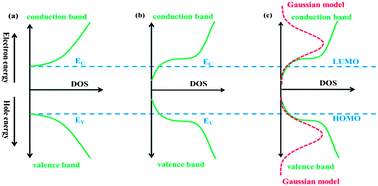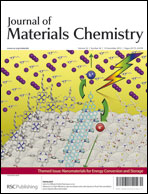Open-circuit voltage in organic solar cells
Abstract
Open-circuit voltage (VOC) is the maximum voltage a solar cell can provide to an external circuit, which is derived from the splitting of hole and electron quasi-Fermi levels. In crystalline Si solar cells, the effective density of states at the bottom (top) of the conduction (valence) band is constant, and the quasi-Fermi level can be directly calculated via the Fermi–Dirac distribution. However, in organic materials, similar to amorphous Si, disorder induces gap tail states. Relaxation of carriers into these tail states brings the electron quasi-Fermi level down and the hole quasi-Fermi level up, and hence reduces VOC. Furthermore, carrier recombination of various kinds can cause additional loss of VOC. This article reviews the research progress in understanding the origin of VOC in organic solar cells. In particular, the dependence of VOC on four important factors, namely temperature, light intensity, work function of the electrode and material microstructure are discussed based on the model of density of states. Techniques to enhance VOC are also briefly introduced and their mechanisms are analysed.

- This article is part of the themed collection: Nanomaterials for Energy Conversion and Storage

 Please wait while we load your content...
Please wait while we load your content...